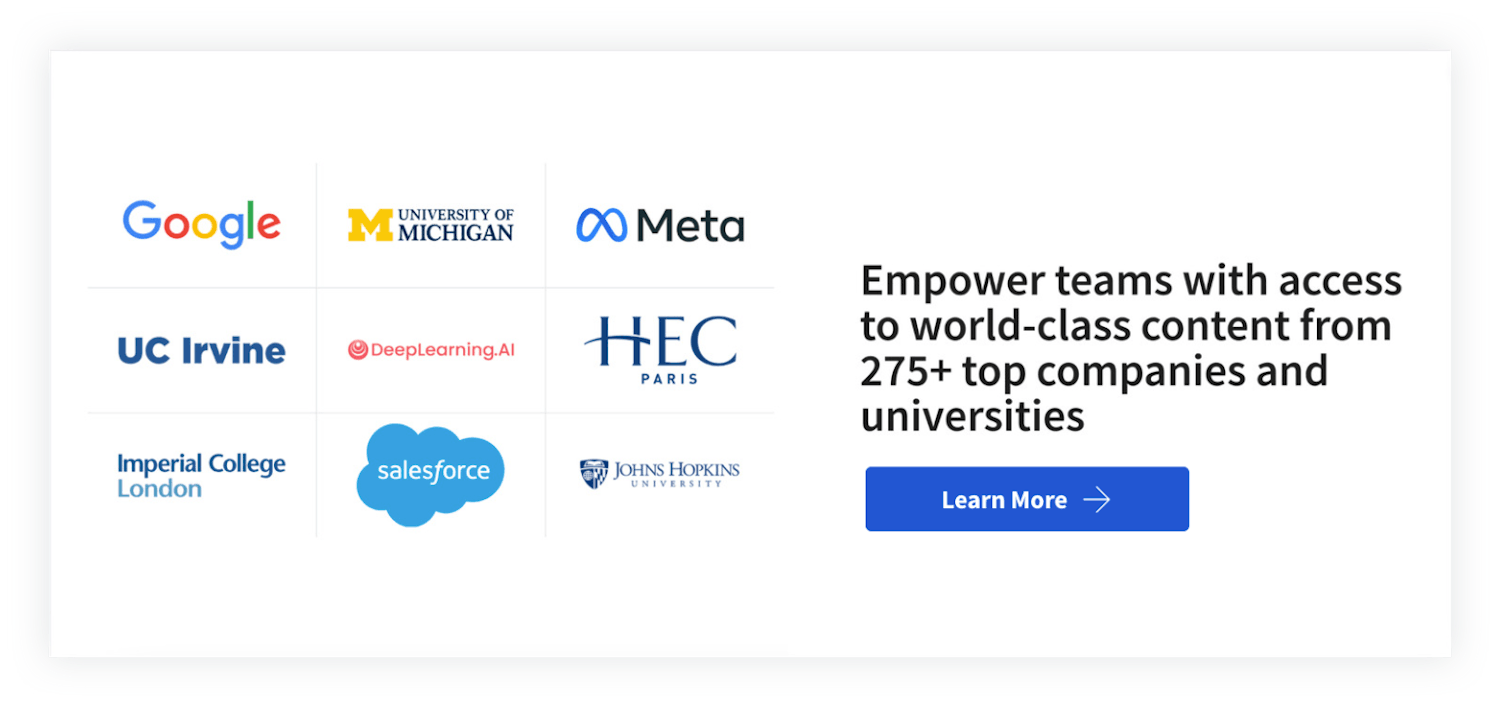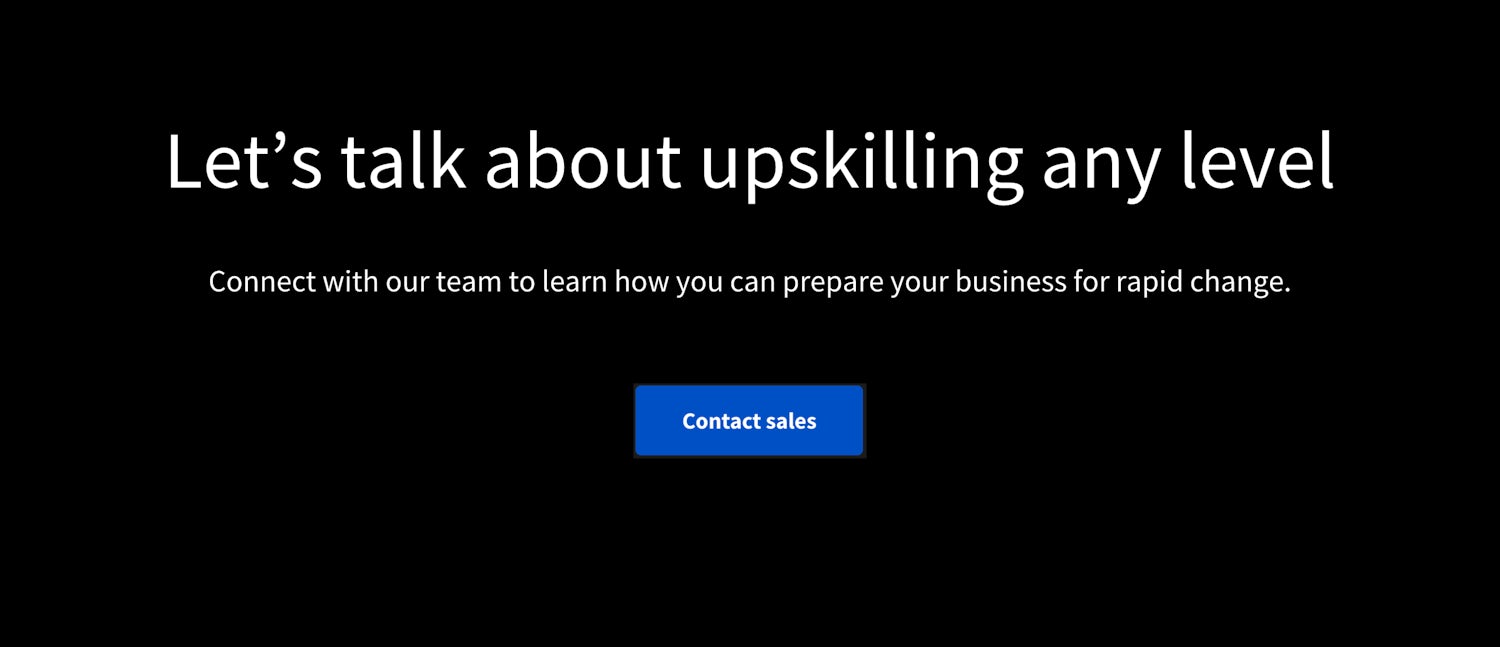What Is Workplace Learning? Your 2024 Guide
Workplace learning is critical in helping your employees develop in their roles. Learn more about workplace learning, its benefits, and how to design optimal workplace learning structures for your business.
![[Featured image] Man and woman discussing an online class by a computer](https://d3njjcbhbojbot.cloudfront.net/api/utilities/v1/imageproxy/https://images.ctfassets.net/wp1lcwdav1p1/1kNOIVSyuErjnBhtG2Y3pk/40f3786e822d4a5974af1c98b3db78e3/Stocksy_txp4c3f1b1dCms200_Large_2095996.jpg?w=1500&h=680&q=60&fit=fill&f=faces&fm=jpg&fl=progressive&auto=format%2Ccompress&dpr=1&w=1000)
As workplaces evolve to include new technologies like automation, an established workforce's need to continue learning and developing new skills grows. You can achieve this goal by implementing a strategy known as workplace learning, the method of integrating learning and development into the flow of a typical workday. Workplace learning allows employees to gain new skills without removing them from their daily tasks for separate learning time.
This strategy is essential for solving skill gap issues in businesses where employees’ time is in high demand. For many professionals, the pull of emails, internal meetings, looming deadlines, and increasing responsibilities means stepping away from their daily tasks to pursue professional development can be complicated. But when learning new skills falls continuously to the bottom of the priority list, these professionals may experience frustration when confronted with new technologies or industry changes that make it more challenging to complete their job successfully.
Read more to learn about workplace learning, how it benefits a workforce, and what strategies exist for creating a workplace learning platform tailored to your business’s goals and needs.

What is workplace learning?
Workplace learning is the method of providing professional development and learning opportunities to either current employees or students during a typical workday. Unlike more traditional professional development methods, workplace learning allows employees to develop skills while also completing their daily tasks rather than making them step away from their role for a separate class or training session.
Many businesses find success in cultivating a culture of learning to facilitate workplace learning by creating a work environment that encourages taking the time to learn and develop skills. By creating a framework that provides multiple learning avenues, employees will feel more comfortable dedicating parts of their day to professional development since employees won’t see learning as time taken away from more important tasks.
What is workplace learning used for?
Workplace learning is mainly used for two types of professional development: upskilling and reskilling.
Upskilling adds new skills to employees' repertoire to help them advance or take on new assignments as their industry advances. Reskilling, on the other hand, allows an employee to develop an entirely new set of skills, often to move them into a new role that doesn’t align with their current experience.
Typically, organizations offer employees formalized training during the onboarding process. leaving any further professional development to intermittent training and making it difficult to retain and develop new skills. Employees then feel overwhelmed and frustrated because they don’t have the skill sets necessary to meet their job’s expected duties. Over time, this issue contributes to poor employee retention, skill mismatches, and low job satisfaction.
Offering workplace learning opportunities allows employees to address specific weaknesses, skills gaps, and upskilling or reskilling needs. Over time, businesses that provide consistent, integrated learning opportunities experience less turnover and increased employee satisfaction.
Types of workplace learning
Workplace learning typically falls into two categories: formal or informal (also known as structured or unstructured learning). Formal workplace learning refers to learning with an established coursework path, such as e-learning courses presented through a learning management system. Informal workplace learning refers to training without a set path of coursework, such as watching videos, listening to podcasts, or reading articles based on specific needs or interests. Many businesses offer a blend of formal and informal workplace learning opportunities to meet the varying needs of their employees.
Different types of workplace learning include:
• Apprenticeships
• Mentorships
• Integrative technologies to disseminate learning materials through channels such as Slack
• Chat interfaces for sharing knowledge among employees
• Team training
• Independent learning opportunities like volunteering
• Workforce education programs that provide incentives to gain certifications
• Email newsletters
• E-learning portals
• Webinars

To create the most effective workplace learning culture for your business, you’ll want to consider which skills you want your team to master. Then, you will choose the strategies you think your team will engage with the most. Lastly, you will need to gain manager buy-in and support. Make the courses or training easy to find and do, and consider offering incentives for those who complete their goals. Celebrating success, providing tangible outcomes, and promoting open communication with your team are all ways to help encourage workplace learning.

Benefits of workplace learning
Workplace learning offers a variety of benefits to a business and its employees. Consistent learning opportunities allow employees to develop their skills without stepping away from their daily tasks for prolonged periods. This creates an overall learning culture that everyone benefits from.
Some of the primary benefits of workplace learning include:
Increased employee satisfaction: Employees who feel like their employers value them through investing in their professional development tend to stay longer and feel more satisfied with their jobs.
Strengthening employee weaknesses and skill gaps: Workplace learning allows employees to address any areas in their experience they’d like to grow in and gain extra knowledge.
Reduced turnover and employee churn: Employees feel they have ample chances to learn while on the job and are much more likely to stay longer in a role, reducing the hiring and onboarding needed.
Better knowledge sharing within a team: Workplace learning allows employees to learn from each other, sharing their insights and experiences to further everyone’s skill set and knowledge base.
Improved employee performance: Employees who learn within their roles are more prepared for advancement, which helps the entire company to grow.
Getting started with Coursera
Discover courses and lessons to bolster your company’s workplace learning framework on Coursera. You’ll find courses like UC Davis’s Professional Skills for the Workplace Specialization, which offers foundational knowledge to advance your employee’s skill sets. Courses on Coursera are available both asynchronous and synchronous, so your team can learn needed skills on their time and pace. These courses describe how to create a tailored workplace learning option for your company today.

Coursera Staff
Editorial Team
Coursera’s editorial team is comprised of highly experienced professional editors, writers, and fact...
This content has been made available for informational purposes only. Learners are advised to conduct additional research to ensure that courses and other credentials pursued meet their personal, professional, and financial goals.